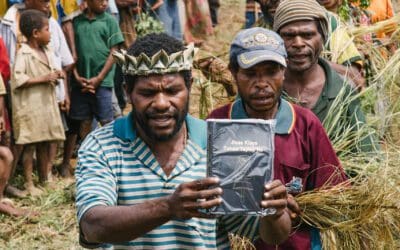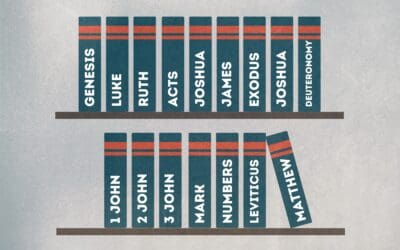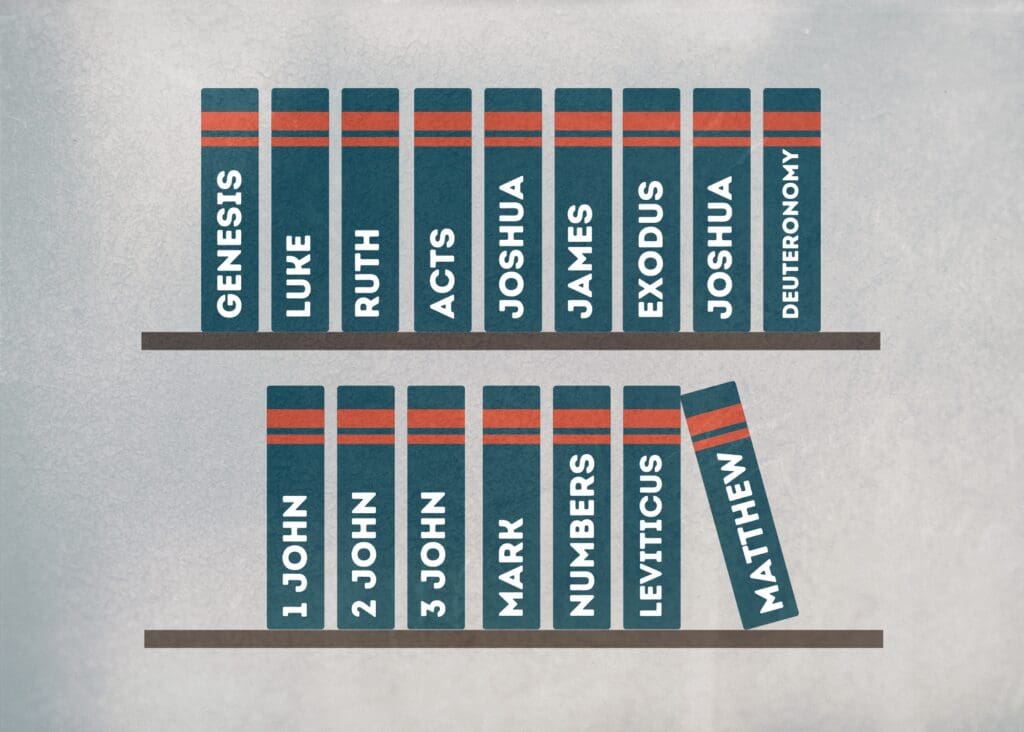Checks and Balances
The air conditioner gently hummed behind me, making a valiant effort to cool the room and remove some of the 95% humidity of Madang, Papua New Guinea. I sat at one corner of a conference table, staring into my laptop screen, comparing what I was hearing with the database before me. Across from me sat Max. Around the table were Ezekiel, Wai, Kisama, Matthew, Feliks, Magdala, and — finally — Jakob.
Ezekiel read aloud in Somau Garia, his language. “Ere xuriatiti xeika tuxotapa sipa apimi xeikae Yesusu ati xeke tataiwoteneai….” We were checking the translation of Luke 20 that day to evaluate whether or not Somau Garia speakers could understand the draft’s meaning, and we had reached verse 20.
The words Ezekiel had just read bounced around in my head, becoming something like, “The big priests with the law-knowing men watched Jesus closely.” I compared this to the Greek text on my laptop. I listened as Jakob spoke aloud an on-the-fly translation from Somau Garia into the local trade language. It was obvious that he understood clearly. So far, so good.
The message of the Gospel is communicated in words — and also through the lives of the servants who are writing down those words.
Checking the translation is an important step in ensuring that Somau Garia speakers will be able to understand the meaning of Luke. Bible translation is not the same as having someone interpret while you teach people who speak a language you do not know. It is a time and labor intensive process that can span decades. Its purpose is to provide enduring access to God’s Word to people who do not yet have it in their own language.
Bible translation is also relationship intensive. The message of the Gospel is communicated not only in words, but also through the lives of the servants who are writing down those words. Translators live and work in close proximity to their neighbors who see them at their very best — and their very worst.
Going Below the Surface
As Ezekiel and Jakob’s words resonated in my mind, I began thinking about what motivates people. “The big priests and law-knowing men watched Jesus closely.” Luke tells us what motivated these leaders: they were trying to ensnare Him. But what if these words were written about you or me? Why would we be watching Jesus closely? Would we wish to indict or follow Him?
Why would we be watching Jesus closely? To indict Him? Or to follow?
Immediately prior to this account, Luke recorded a parable Jesus told about a landowner who sent men to collect rent from his tenants. You know the story. The tenants beat the worker who was sent to collect the rent, treated him shamefully, and sent him away empty-handed. Twice more the landowner sent another servant. The same thing happened to them. So he sent his son, reasoning, “Surely they will respect my own son.”
The tenants, however, figured that if they killed the son, the inheritance would be theirs. They gravely misjudged the landowner. He was neither passive nor easily deterred. “What then will the owner of the vineyard do to them?” Jesus asked. “He will come and destroy those tenants and give the vineyard to others.” So that there would be no confusion, Jesus quoted Messianic prophecy to emphasize that the son in the parable was the Promised One.
Laying a Lying Trap
The scribes and chief priests felt the sting of Jesus’ rebuke. They knew He was talking about them. They found themselves on the horns of a dilemma. They desperately wanted to use the Roman government to silence Jesus (by killing Him). Yet they feared the people who respected and followed Jesus, wanting their allegiance. They didn’t want a king in the line of David. They wanted to be in charge.
“A man who flatters his neighbor spreads a net for his feet,” says Proverbs 29:5. It’s interesting how Satan twisted this principle in the minds of these leaders as they plotted Jesus’ demise. They sent spies to draw Jesus in with flattery, pretending to seek wisdom from him while hoping to lay a trap made of His own words.
First with the flattery. “Teacher, we know that You speak and teach rightly, and show no partiality, but truly teach the way of God.” They spoke truth, but they did not believe it. Then came the trap. “Is it lawful to give tribute to Caesar or not?”
Jesus’ answer points us toward the crux of his Kingdom. “Show me a coin.” It’s hard to know what these people were thinking just then. What could He possibly want with a coin? Someone pulled out a denarius. One side bore a profile of Tiberius Caesar’s face and the inscription TI CAESAR DIVI AVG F AVGVSTVS — “Tiberius Caesar, Son of the Divine Augustus, Augustus.” On the other was the image of Tiberius’ mother Livia (wife of Augustus) holding a scepter and olive branch, dressed as Pax (Peace), sitting on a chair. The accompanying inscription was PONTIF MAXIM — “Pontifex Maximus” (Supreme Leader).
“Whose likeness and inscription does this coin bear?”
“Caesar’s.”
“Then render to Caesar the things that are Caesar’s, and to God the things that are God’s.”
Whose feet were in the net now?
Images and Icons
Jesus’ answer was so shrewd. While these experts in the Jewish law could not indict Him by His words, neither could they escape them. They surely did not miss the innuendo. “Whose likeness (icon) and inscription (epigraph) does it have?” The word translated “likeness” here occurs in the Greek translation of the Old Testament when God says, “Let us make man in our image (icon)” (Genesis 1:26).
Perhaps Jesus’ words brought Isaiah 49:16 to their minds: “See, I have inscribed you on the palms of My hands.” These words refer to God’s promise to send Israel a Redeemer, His assurance that He would never forget the child (Israel) so dependent upon Him for nurture, sustenance, and protection. These were powerful images, meaningful to an oppressed people looking for a deliverer.
The coin made divine claims about Tiberius in both image and inscription. The silver coin was issued under his authority, in some sense belonging to him. Because his image and inscription were on the money, those using the money owed tribute to him. Ownership was involved in the exchange of this money.
God’s Ownership
It is the quiet implication in the second half of Jesus’ statement that interests me most. First He directed the chief priests and scribes to “give to Caesar that which belongs to Caesar.” Then came His second statement: “Give to God the things that are God’s.”
The Old Testament prophets made a clear connection between ownership and inscription.
Though there was no coin with which to illustrate this second principle, there most certainly were concepts of “image” and “inscription” in the hearers’ minds. Mankind was made in God’s image (Genesis 1:26). Consider Genesis 5:1-3: “When God created mankind, He made them in the likeness (icon) of God. He created them male and female and blessed them. And He named them ‘Mankind’ when they were created. When Adam had lived 130 years, he had a son in his own likeness, in his own image; and he named him Seth.” (NIV, Biblica, 2011)
Old Testament prophets made a clear connection between ownership and inscription. Consider these words of God spoken through Jeremiah and Ezekiel:
“Behold the days are coming, declares the Lord, when I will make a new covenant with the house of Israel and the house of Judah, not like the covenant that I made with their fathers on the day when I took them by the hand to bring them out of the land of Egypt, my covenant that they broke, though I was their husband, declares the Lord. For this is the covenant that I will make with the house of Israel after those days, declares the Lord: I will put my law within them, and I will write it on their hearts. And I will be their God, and they shall be my people. And no longer shall each one teach his neighbor and each his brother, saying, ‘Know the Lord,’ for they shall all know me, from the least to the greatest, declares the Lord. For I will forgive their iniquity, and I will remember their sin no more.” (Jeremiah 31:31-34)
“I will sprinkle clean water on you, and you shall be clean from all your uncleannesses, and from all your idols I will cleanse you. And I will give you a new heart, and a new spirit I will put within you. And I will remove the heart of stone from your flesh and give you a heart of flesh. And I will put my Spirit within you, and cause you to walk in my statutes and be careful to obey my rules. You shall dwell in the land that I gave to your fathers, and you shall be my people, and I will be your God.” (Ezekiel 36:25-28)
The coin in Jesus’ hand bore the image and inscription of Tiberius Caesar, showing the spies that they should give tribute to Caesar, by whose authority the coin had been minted. The covenant under which both Jesus and these Jewish authorities were born showed that they should give themselves to God, in whose image they were created and whose inscription was written upon their hearts.
Whose Image Is Imprinted on Your Life?
Somau Garia culture is in transition. Their ancestors believed in a pantheon of spiritual entities, each with authority over certain areas of their ancestral land. Each “bush god” was represented by an animal, which anthropologists call totems. For example, the bush god Kutia was represented by a hawk, Mupu by a python, Mamunaku by a dog (related to mamu, the Somau Garia word for dog), and so on. Each bush god had its image. The people were expected to pay tribute — whether by making animal sacrifice or observing taboos — to whichever god ruled their land.
These beliefs still exist under the surface of Somau Garia culture, and they continue to exert influence.
Just then, in that upper room in Madang, the electricity cut out, bringing me back from my musings. The lights were off, computer monitors blank, all activity momentarily suspended. Again the words Ezekiel had read stirred in my heart and mind. “The big priests with the law-knowing men watched Jesus closely.…”
As we waited for the back-up generator to start up, I began to share a few of my thoughts with these friends. I started with a question: “Whose image and inscription are on your people? To whom do you belong?”
I let that hang for a bit.
“People watch you. They watch me. They know that we claim to have given our stomachs [seat of the emotions] to Jesus to follow Him. When times get hard or sickness takes them, they have to decide whether to pray to God or make sacrifices to the bush gods. Do they see God’s image on our lives? Do they see His writing on our hearts? Do they hear His words coming from our mouths? When they watch us closely, do they choose to trust God to take care of them in their heavy times [distress], or do they give themselves to the ways of their ancestors? When times are good, how do they celebrate? Do they go to church? Give an offering to God? Or do they perform rituals to the bush gods?”
Do people see God’s image stamped on our lives? Do they see His writing on our hearts? Do they hear His words coming out of our mouths?
These questions are ours, too. Whose image and inscription are on our lives? To whom do we belong? Do others see His image in us? Do others see His Word written on our hearts? Do they hear His Words coming from our mouths? Can we trust Him to carry us through our times of distress? Can we trust Him to care for us in our times of celebration? If others watch our lives closely and are influenced by them, are they encouraged to take heart and trust Him?
Whose image and inscription are on our lives?
Unless where noted, Scripture quotations are from the English Standard Version Bible. Crossway Bibles, 2001.
Photo from the British Museum britishmuseum.org/collection/image/115795001










